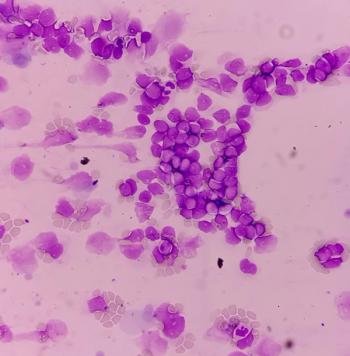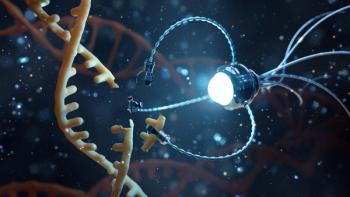
Top articles published this week include an article on classifying space debris, a report on a new fiber-dispersive Raman spectrometer, and an examination of Fourier transform infrared (FT-IR) microscopy.

Top articles published this week include an article on classifying space debris, a report on a new fiber-dispersive Raman spectrometer, and an examination of Fourier transform infrared (FT-IR) microscopy.

A trip to the Lyndon B. Johnson Space Center served as a reminder of the importance of space exploration and the key role spectroscopy plays in this industry.

A recent study led by Xaolin Cao at Yantai University demonstrated a rapid and highly sensitive method using magnetic molecularly imprinted polymers combined with surface-enhanced Raman spectroscopy (MMIPs-SERS) for detecting neonicotinoid pesticides in agricultural products.

A recent study highlights the critical role of Fourier transform infrared spectroscopy (FT-IR) in the qualitative and quantitative analysis of asphalt materials, focusing on its applications in quality control, material identification, and the analysis of modification and aging mechanisms.

In this tutorial, we examine the techniques for preparing samples for transmission analysis using single windows, compression cells, and, finally, epoxy “pucks” and microtomes.

By providing automated tools and guidance, an ECS would aim to streamline the calibration process, improve calibration transfer, enhance operator efficiency, and improve the overall consistency and reliability of analytical results produced using advanced chemometrics and machine earning techniques.

This review highlights very recent advancements in several key spectroscopic methods, including atomic, vibrational, molecular, electronic, and diffraction techniques.

A recent study examines using hyperspectral imaging (HSI) to analyze single-pixel images of space objects.

This article explores the current landscape of global critical raw materials (CRM) trends in research and the applications of atomic spectroscopy (AS), including inductively coupled plasma–mass spectrometry (ICP-MS), inductively coupled plasma–optical emission spectrometry (ICP-OES), and X-ray analytical techniques in their identification of diverse industrial and environmental media.

A recent study looked at the use of Fourier-transform infrared (FT-IR) spectroscopy in ensuring the safety and efficacy of dairy products.

Metrohm Spectro Inc., a New Jersey-based company that develops and manufactures analytical science instruments, announced the expansion of its Raman Chemical Warfare Agents library to include 111 deadly substances.

Top articles published this week include an article on soil analysis using visible–near-infrared (vis-NIR) spectroscopy, Raman spectroscopy in leukemia screening, and 2D-correlation spectroscopy (2D-COS).

A recent study examined the challenges facing the food analysis industry, highlighting the current advanced methods being used in the field.

A recent study examined the role of high-resolution mass spectrometry imaging in assessing environmental contaminants.


A recent study examined using Raman spectroscopy to screen leukemia in patients.

In agriculture, soil quality is integral to facilitating good farming practices and maximizing crop yield. A new study examines how visible-near-infrared (vis-NIR) spectroscopy is being used to evaluate soil quality.

Top articles published this week include a review article on food and beverage analysis, handheld X-ray technology, and chaos theory.

A recent study from Sichuan, China, leveraged a few spectroscopic techniques with chemometrics to analyze key components of the beer brewing process.

A recent study from Yanshan University examined optical nanoantennas and how their properties change over across different configurations.

A recent study looks at using Fourier transform infrared (FT-IR) spectroscopy to distinguish between platinum-resistant and platinum-sensitive ovarian cancer tissues.

A recent study combined Raman spectroscopy with chaos theory to improve the reliability of diagnosing several types of cancers.

A recent study examined using Fourier-transform infrared (FT-IR) spectroscopy and machine learning to identify compounds in nine Chinese beers.

A recent study from the Center for Research on Archaeometry and Conservation Science demonstrated the value of using μ-Raman spectroscopy to analyze ancient ceramics.

Researchers from the University of Amsterdam investigate the properties of urocanic acid using high-resolution laser spectroscopy combined with resonance enhanced multiphoton ionization to help develop safer sunscreen products.

A recent study introduced a new scanning X-ray fluorescence (MA-XRF) scanner that improves analysis of cultural heritage artifacts.

Top articles this week include how spectroscopy is being used in education, athletics, and biology.

A recent study examines using a new predictive model to accurately and efficiently identify evanescent trauma in skin tissue.

A recent study from the University of Guelph used nuclear magnetic resonance (NMR) spectroscopy to learn more about protein unfolding.

A recent study demonstrated how using laser spectroscopic techniques can help uncover new information about archaeological samples.